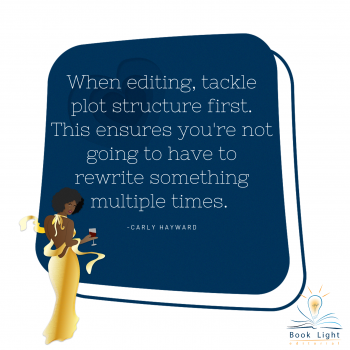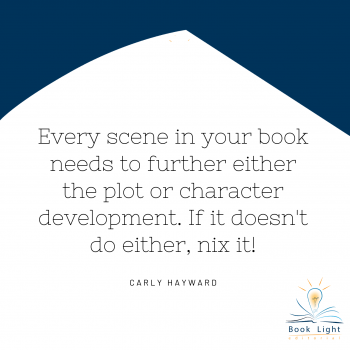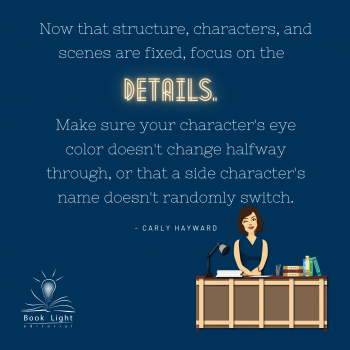In April, we focused on discussing how to recover from—and move forward with—beta feedback! First, eat some chocolate and take a day to recuperate; it’s tough finding out what’s wrong with your precious novel. We understand. (Take a look at May’s theme, Self-Care: Author Edition!)
Okay, the mourning period is over, and it’s time to apply these edits so your book can truly shine! But there are so many things to fix… how do you efficiently sort through everything?
Simple! We suggest a four pass structure to editing your novel, and recommend you sort all beta feedback into one of these categories:
- Pass One: Structural Edits
- Pass Two: Character Edits
- Pass Three: Scene-by-Scene Edits
- Pass Four: Copy Edits
This formula ensures you’re not going to be redundant with edits. Instead of fixing something, only to realize it needs to be scrapped later, you’re moving meticulously through your novel’s story and smoothing every important avenue one at a time.
For example, when tackling structural edits, we recommend you focus on big issues: plot holes, characters jumping locations, or problems that simply don’t make sense. Fix these first, without any regard for how your character will respond to it.
Once structure is in place, now it’s time to examine characters. Make sure motivations are in alignment with their personalities, smooth out romances, and ensure your characters act consistently and believably within the plot.
By the third pass, your big issues should be handled. Now it’s time to examine each scene. Make sure every single interaction either furthers the plot or challenges your characters’ relationships. Ask yourself: can the plot survive without this scene? If the answer is yes, nix it.
Finally, do a quick read-through for copy edits. This is when you make sure character names don’t change, that everyone’s appearances stay consistent, and that your sentences are the best you can make them. We recommend reading your book out loud for this pass—if you stumble over anything, it might need rewording!




We hope this helped offer a suggestion on how to apply beta feedback. Remember, there is no “correct” way to edit your novel, so you may have to experiment to find out what works best for you! No matter what, your novel will improve, and over time you’ll discover what works best.
Feedback is tough to hear sometimes, so please don’t forget to take a moment for writerly self-care! May’s theme is Self-Care: Author Edition, and we’ll be offering tips and tricks for disconnecting from the stress of writing! Stay tuned.
Follow along on our Instagram page: @BookLightEditorial. See you there!

